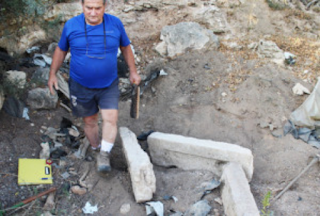Programs to lure Israeli-Americans to synagogue are popping up, but it’s a slow road to shul membership.
Is it really happening? Are Israeli-Americans, the longtime refuseniks of Jewish-American institutional life, finally coming to shul?
The answer today is yes, at least in the physical sense.
For several years now, some synagogues around New York have been independently hiring Israeli directors to develop the kind of Hebrew-centric, culturally relevant programming that would lure Israeli-Americans. Their efforts have been hugely amplified by the work of the juggernaut Israeli-American organization IAC (Israeli American Council), which for the past two years has been conducting its own programs in partnership with synagogues, with the specific aim of getting Israelis to physically walk into the building. It’s safe to say that today most Israeli-American cultural life, from kids’ activities in Hebrew to holiday parties, takes place inside synagogues. So you can lead an Israeli to shul, it seems — but can you make him drink?
Continue reading.
Follow us on
























